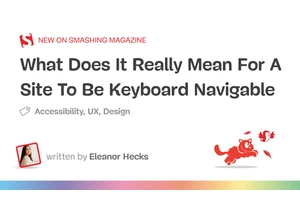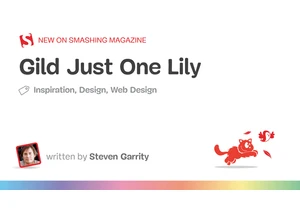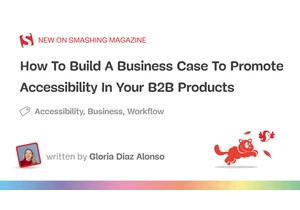The CSS clamp() function is often paired with viewport units for “fluid” font sizing that scales the text up and down at different viewport sizes. As common as this technique is, several voices warn that it opens up situations where text can fail WCAG Success Criterion 1.4.4, which specifies that text should scale up to at least 200% when the user’s browser reaches its 500% maximum zoom level. Max Barvian takes a deep look at the issue and offers ideas to help address it.
https://smashingmagazine.com/2023/11/addressing-accessibility-concerns-fluid-type/
Войдите, чтобы добавить комментарий
Другие сообщения в этой группе

Poor internet connectivity doesn’t have to mean poor UX. With PWA technologies like IndexedDB, service workers, and the Background Sync API, you can build an offline-friendly image upload system tha

Keyboard navigation is a vital aspect of accessible web design, and a detail-oriented approach is crucial. Prioritizing keyboard navigation prioritizes the user experience for a diverse audience, exte

While there’s no definitive playbook for building an accessibility culture, Dani shares lessons from his experience in shaping it through habits rather than mandates. https://smashingmagazine.com/2025

Dark mode isn’t just a trendy aesthetic. It’s a gateway to more inclusive digital experiences, but only if designed thoughtfully. Discover how to craft dark modes that don’t just look good but work fo

“Gilding the lily” isn’t always bad. In design, a touch of metaphorical gold — a subtle animated transition, a hint of color, or added depth in a drop shadow — can help communicate a level of care and

Animation makes things clearer, especially for designers and front-end developers working on UI, prototypes, or interactive visuals. Manim is a tool that lets you create smooth and dynamic animations,

When passion for accessibility meets business indifference, what bridges the gap? Gloria Diaz Alonso shares how she turned frustration into strategy — by learning to speak the language of business. ht
